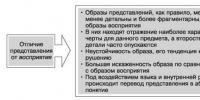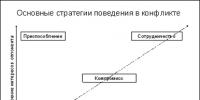Eliseev Gennady Nikolaevich. Biography
Our life is short, like a strip of concrete.
And on it - some crashed, some took off forever..."
(V. Vysotsky “Song about a Dead Friend”)
Gennady Nikolaevich Eliseev (December 26, 1937, Stalingrad - November 28, 1973, Georgian SSR) - pilot (graduated from the Bataysk Military Aviation School of Pilots in 1959), deputy squadron commander of the 982nd Fighter Aviation Regiment of the 283rd Fighter Aviation Division of the 34th th Air Army of the Transcaucasian Military District, captain, Hero of the Soviet Union.

Feat
On November 28, 1973, Captain Eliseev on a MiG-21SM fighter took off from the Vaziani airfield to intercept an intruder aircraft that had invaded Soviet airspace in the Mugan Valley region (Azerbaijan).

Mig-21
The uninvited guest turned out to be the Iranian F-4 Phantom II (some sources erroneously mention the T-33 or even the EU-130E), which was carrying out a reconnaissance mission within the framework of the American-Iranian Project Dark Gene program.

F-4 Phantom II
The air battle took place over the territory of the Georgian SSR. Having received an order to destroy the intruder, Eliseev fired two R-3 missiles at it, after which he rammed it, striking the tail unit with his wing. This was the third aerial ramming of a border violator in a jet aircraft in the history of Soviet aviation.
The Phantom's crew (Iranian Major Shokouhnia, who later died in the Iran-Iraq War, and American Colonel John Saunders) ejected, was detained by border guards and released after 16 days. Eliseev's MiG crashed into a mountain after being rammed, killing the pilot.
The reason why Eliseev did not use the air cannon installed on his plane remained unclear. Presumably, the cannon armament failed.
Burial place and reward
Eliseev was buried in Volgograd, in the cemetery on Dar Mountain (Voroshilovsky district).
By decree of the Presidium of the Supreme Soviet of the USSR dated December 14, 1973, “for demonstrated courage and heroism,” Captain Gennady Nikolaevich Eliseev was posthumously awarded the title of Hero of the Soviet Union and awarded the Order of Lenin and the Gold Star medal to the hero’s relatives.
In Volgograd, a street on which a memorial plaque is installed is named after Eliseev.

In 1975, a monument made of polished granite with an applied bas-relief of forged aluminum was erected at the grave. The monument depicts a portrait of Eliseev and bears the inscription: 1937-1973. Eliseev Gennady Nikolaevich, Hero of the Soviet Union.

In the city of Bereza (Belarus) a memorial plaque was erected in honor of the Hero of the Soviet Union, pilot G. N. Eliseev. The plaque is mounted on the wall of house No. 39 in Northern Town, where he lived for three years (1961-1964) while serving in the 927th Fighter Aviation Regiment.

Tbilisi, town. Vaziani. Secondary school named after Hero of the Soviet Union Captain G. N. Eliseev
30.11.2015
On November 28, 1973, Captain Gennady Eliseev, piloting a MiG-21SM fighter, rammed a Soviet border violator almost over Tbilisi - an Iranian Air Force RF-4C PhantomII aircraft. Iranian Air Force Major Shokouhnia and US Air Force Colonel John Saunders, who piloted the Phantom, ejected, were detained by border guards, and 16 days later handed over to the Iranian side. Captain Gennady Eliseev died. 12 days later he was posthumously awarded the title of Hero of the Soviet Union. (Eight years later, on January 27, 1982, an Iranian pilot would also die in an air battle during the Iran-Iraq War).
Despite the fact that 42 years have passed since then, this story is still dark, unclear and equipped with many unremoved stamps such as “Top Secret. Burn before reading,” and there is no clear official interpretation of it at all. Is it just that some of the identifying details of the hero pilot have been declassified: Gennady Nikolaevich Eliseev was born in Stalingrad on December 26, 1937, into a working-class family.
After graduating from high school in 1955, he entered the Bataysk Military Aviation School named after A.K. Serov, which he graduated in 1959. The last place of service was the Transcaucasian Military District (ZakVO), Vaziani garrison, which is approximately 20 km from Tbilisi. His last position was deputy squadron commander of the 982nd Fighter Aviation Regiment, 283rd Fighter Aviation Division, 34th Air Force.
One version of what happened looks like this. On November 28, 1973, air defense systems recorded another violation of the state border from Iran, and the first alarm signal arrived at the command post of the 15th Corps of the Baku Air Defense District. According to a number of sources, at that time there was an instruction that ordered, if possible, to force intruder transport aircraft to land on our airfields, and to shoot down combat aircraft without warning. The target was identified as a combat aircraft, and it was accompanied by a radio engineering battalion stationed in the village of Imishli.
To intercept the target, two aircraft of the 15th Air Defense Corps were quickly scrambled into the air, and to back them up, a MiG 21SM of the 34th Air Army of the ZakVO, piloted by Captain Eliseev, was scrambled from the Vaziani airfield. The guidance point, calculating that Eliseev’s fighter was closer to the target, gave the order: “Destroy the target!”
This could be done in two ways: the MiG 21SM was armed with four medium-range air-to-air guided missiles R 3R (flight range from 1.5 to 8 km, speed 550 meters per second, flight time 21 seconds, warhead 11 .3 kg, a non-contact radio fuse should provide detonation if the missile passes closer than 30 meters from the target) and a built-in GSh 23L cannon - ammunition capacity of 200 shells.
"First launch!" - Eliseev reported, firing the first double salvo. Then there is silence. After a while, a new report followed: “Second launch!” The second pair P 3P went. And again silence: a miss. There is a version that the missiles missed because the Phantom fired off the heat traps, but this is doubtful: the shooting of the heat traps would certainly have been recorded. Rather, the problem is in the missile itself and its target guidance system: the P 3 of the first modifications, entirely copied from the American AIM 9 Sidewinder missile, due to the specific features of Soviet electronics, was characterized by capriciousness, not particularly reliable, and frequent misses and failures.
Then the captain receives an order from the ground: to go to ram, calmly answering “Yes to ram!” After which the marks of both aircraft disappeared from the radar screens. It is almost officially believed that the captain used the wing of his MiG to cut off the tail of the Phantom, although the officers who were at the command post that day are firmly convinced that Eliseev hit the intruder not with the wing, but with the entire body, after which the MiG 21 exploded in the air. It is still unclear why the pilot did not use his plane’s cannon. According to one version, he still tried to shoot, but after the first burst the gun jammed. For which the aircraft and squadron technicians were allegedly later imprisoned, as well as everyone who was responsible for the weapons. However, there is no evidence of this.
True, there is a version that using the cannon was risky, since the intruder was already very close to the border, and shooting, they say, did not guarantee the defeat of the Phantom. This is obvious nonsense: the missiles had a much greater chance of flying into adjacent territory, but they were still used. Eliseev could not have used the cannon because it was jammed or had no ammunition at all.
However, there is another version regarding the gun. The fact is that the MiG 21SM with a built-in cannon, produced in 1968-1971, was still relatively rare among the troops, since they were equipped with air force units mainly in the European theater of military operations, and not in Transcaucasia. Therefore, it was even suggested that Captain Eliseev, who had previously flown other modifications of MiGs equipped only with missiles, in the heat of a rapid air battle could have completely forgotten about the existence of the gun.
But I can’t believe this either: the deputy squadron commander was a very experienced and cold-blooded pilot who served in combat units for 14 years, so he could hardly have forgotten about this. Yes, and from the ground they would remind him, in the end. This means that something really wrong happened to the gun. There was only one thing left, since the order, which was not subject to discussion, sounded unequivocal: “Stop the enemy’s flight at any cost!”
Later, when an investigation was carried out, the USSR Air Force Commander-in-Chief, Chief Air Marshal Pavel Kutakhov, with his order, would point out the insufficient training of guidance officers who had little knowledge of the weapons of Air Force fighter aircraft. Which very eloquently points to the main culprits of the tragedy, who were sitting at command posts and guidance points.
A number of sources vaguely say that when the Iranian Phantom was spotted and the duty interceptor was lifted into the air, the guidance point equipment suddenly allegedly lost power, the operation of which could not be restored, although, of course, there were backup power sources available. Allegedly, it was because of this that the fighter on duty, having lost contact with the guidance point, was forced to return to the home airfield.
Only after this, with great delay, was Captain Eliseev’s MiG 21SM lifted from Vaziani, forced to use the “services” of another guidance point. The operator of which decided that he was aiming at the target not a MiG 21SM, but a Su 15 with only missile weapons, without a suspended container with guns, which, they say, was the reason, as the order said, “incomplete use of the combat capabilities of the fighter.”
It is also quite strange that the Phantom pilots were able to successfully eject, despite the ram: by all logic, after such a blow they should have ended up in a cemetery. Perhaps they managed to leave their Phantom before the ramming, realizing that they would no longer be allowed to leave? One way or another, this in no way detracts from the true heroism of Captain Gennady Eliseev, forcing us to once again remember the immutable truth: behind every feat there is always someone’s meanness or sloppiness...
Authors:
Eliseev, Gennady Nikolaevich- (12/26/1937 11/28/1973) fighter pilot, Hero of the Soviet Union (1973, posthumously), captain. After graduating from the Bataisky VAUL in 1959, he served in the air defense. On November 28, 1973, a MiG 21SM rammed a T 33 (according to other sources F 4 Phantom) of the Iranian Air Force... Large biographical encyclopedia
Eliseev- Eliseev is a Russian surname. Famous bearers: Eliseev, Alexander Vasilyevich (1859 1895) Russian military doctor and traveler. Eliseev, Alexander Terentievich (born 1971) former Latvian football player, forward. Eliseev, ... ... Wikipedia
Korchebokov, Lev Nikolaevich- Lev Korchebokov General information... Wikipedia
Anokhin, Sergey Nikolaevich- The style of this article is non-encyclopedic or violates the norms of the Russian language. The article should be corrected according to the stylistic rules of Wikipedia... Wikipedia
List of Heroes of the Soviet Union (Evgrafov- Contents 1 Notes 2 Literature 3 Links ... Wikipedia
List of Heroes of the Soviet Union/E- A service list of articles created to coordinate work on the development of the topic. This warning does not apply to informational articles, lists and glossaries... Wikipedia
Air ram- USSR postage stamp of 1943 with a picture of Talalikhin’s night ram. Ramming is an air combat technique intended to disable an enemy aircraft or airship by colliding or cutting off the control planes with the propeller blades (in the event of... ... Wikipedia
Ram (air)- This term has other meanings, see Ram (meanings) ... Wikipedia
1973 in aviation- Years in aviation 19th century... Wikipedia
Laureates of the Stalin Prize for outstanding inventions and fundamental improvements in production methods- The Stalin Prize for outstanding inventions and fundamental improvements in production methods is a form of encouragement for citizens of the USSR for significant services in the technical development of Soviet industry, the development of new technologies, modernization... ... Wikipedia
November 28, 1973 went down in the history of world aviation. During the destruction of an intruder aircraft that had invaded the airspace of the USSR, the world's first ram was carried out on a supersonic jet fighter.
On that day, the deputy squadron commander of the 982nd Fighter Aviation Regiment (34th Air Army, Transcaucasian Military District), Captain G.N. Eliseev, was on combat duty at the Vaziani airfield. Unexpectedly, in the area of the Mugan Valley (Azerbaijan), the state border of the USSR was violated by an F-4 Phantom aircraft of the Iranian Air Force. On command from the Command Post, Eliseev first took standby number 1, and then took off in a MiG-21SM fighter to intercept the intruder aircraft.
Eliseev overtook him not far from the border. An order came from the ground: “Destroy the target!” Eliseev launched 2 missiles, but they missed. An order from Captain Black came from the command post: “Stop the enemy’s flight at any cost!” Gennady Nikolaevich replied: “I understand. I’m doing it!” These were his last words.
MiG-21SM fighter of Captain G. N. Eliseev. 982nd IAP, autumn 1973.

Apparently G.N. Eliseev forgot that his plane, the only one in the regiment, was armed not only with missiles, but also with a cannon. And then he decided to go for the ram.
Eliseev approached the intruder aircraft and struck its tail with the wing of his fighter. He went down. The crew, consisting of an American instructor and an Iranian crew, ejected and was detained by border guards. Eliseev’s plane crashed into a mountain after being rammed, killing the pilot. This happened at 13:15...
This was the first ramming strike in the history of jet aviation, but it also cost the life of our pilot.

On December 14, 1973, for the courage and heroism shown in the performance of military duty, Captain G. N. Eliseev was posthumously awarded the title of Hero of the Soviet Union. Awarded the Order of Lenin and medals.
Gennady Eliseev was born on December 26, 1937 in the city of Stalingrad (now Volgograd), into a working-class family. He spent his childhood and youth in his hometown. After graduating from high school in 1955, he was drafted into the Soviet Army and sent to the Bataysk Military Aviation School of Pilots, which he successfully graduated in 1959. The military pilot served in various combat aviation units and became deputy squadron commander. The last place of service was a garrison near the city of Vaziani (Georgia).
He is buried in the city of Volgograd, where a street is named after him and a memorial plaque is installed. Enlisted forever in the lists of the military unit. The Eliseev family currently lives in Minsk.




